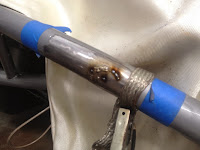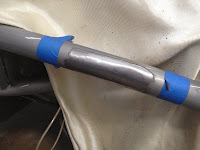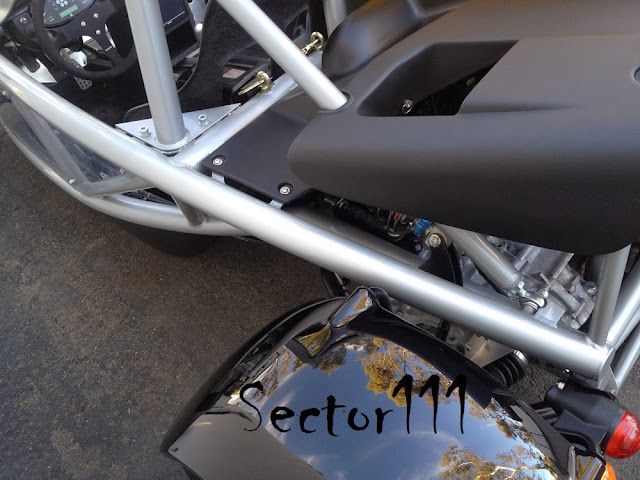Oil is designed to lubricate the moving parts in your engine and to help cool it. Oil is thicker (more viscous) when it is cold and when it warms up, it thins out and flows better. This improves lubrication and cooling effects. Of course it can get too thin and cause oil pressure to drop - which can be dangerous. Typically you want to achieve 10psi (.69 bar) of oil pressure for every 1,000rpm that you are running. Cold oil is the cause of a fair amount of wear and tear that takes place to your engine.
 |
| BAC Mono dash showing oil temp in deg C and oil pressure |
I spoke at length with Chuck@Competitive Edge - our Motul distributor to get some more background on oil performance. We run Motul oils, especially the 300V on all of our track driven cars. This oil is an ester-based, full synthetic. 300V is designed to run as hot as 385degF(196degC) before it starts to degrade. This is a shockingly high number for most of us but is backed with solid data and testing.
The Mono has a Cosworth engine that recommends a heavier oil: 15W50 and the Lotus runs a thinner 5W40 in the Toyota 2ZZGE. The following table shows some interesting 300V data that compare these two oil weights:
|
The above data came from Motul's technical reference sheets: 5W40 & 15W50 You can see that the heavier weight oil (15W50) maintains a higher viscosity as the temperatures rise yet at cold temps(50degF) it has about the same density as the lighter oil. So the cold start performance/wear & tear will be similar and provide good performance as the temps rise. Good low temp viscosity is a key advantage of a synthetic oil.
 |
| BAC Mono at Oulton Park |
In the Mono, I am seeing temps up to 120deg C (248degF) with hard canyon use as well as on the track. The factory suggests that 130degC (266degF) is acceptable. An important consideration is to see how the oil pressure is managing - which at 120degC is fine. We've not monitored pressure yet at higher oil temps. We have submitted oil samples to a laboratory for analysis and found that it was still in good condition (though admittedly the mileage was under 1k).
Our ArtCar (Elise) ran oil temps as high as 270deg F (132degC) with acceptable oil pressures in Lotus Cup events. See videos from Chuckwalla (see below) and Buttonwillow. The oil temps climbed slowly over the course of a ten lap race - if we were to run an endurance event we would have likely added an oil cooler - this car lacked coolers. The drySUMP on our Elise had a great cooling effect so we completely deleted all the oil coolers.
We've experienced oil temps that have ranged up to 270+ degF (132degC) on our various cars. Bill @Dailey Engineering had also mentioned that Vipers are consistently running oil temps well over 300degF with no issues. Assuming that water/coolant temps and oil pressure remain safe, high oil temps seem perfectly acceptable.
So what kind of life can you get from a synthetic? Typically with a good synthetic oil, the additive packages will begin to degrade first which then results in the oil needing to be replaced. Even cars that are run hard on track can likely get 2,500-3000 miles of use before needing to change the oil. Of course more frequent oil changes won't hurt.
 |
| V6 Exige CupR at PB Racing |



